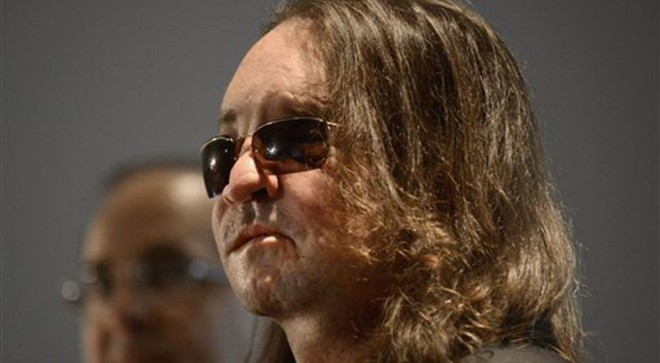Face transplants thriving 2 years after operations

The nation’s first full face transplant patient Dallas Wiens looks on during a news conference at McCormick Place in Chicago, Wednesday, Dec. 4, 2013. AP
CHICAGO, United States — The first full-face transplant patients in the US are growing into their new appearances — literally.
Medical imaging shows new blood vessel networks have formed, connecting transplanted skin with the patients’ facial tissue, a finding that may help improve future face transplant surgeries, doctors announced Wednesday.
Dallas Wiens, the first US man to get a full face transplant, is a remarkable example of that success. The 28-year-old attended Wednesday’s annual meeting of the Radiological Society of North America with his new wife and golden retriever guide dog. Despite visible facial scars from the March 2011 surgery, he looks and sounds like a recovered man.
“My entire life is a miracle,” Wiens said at a news conference.
His face was burned off in a 2008 painting accident at his church, when his head hit a high-voltage wire.
After surgery, Wiens lived for two years with no facial features and just a slit for a mouth, until his transplant at Boston’s Brigham and Women’s Hospital.
Imaging studies on Wiens and two other full-face transplants done at the hospital in 2011 show that a network of new blood vessels had formed just a year after the operations. A fourth full-face transplant was performed at the hospital earlier this year.
The same thing typically happens with other transplants and it helps ensure their success by boosting blood flow to the donor tissue. But doctors say this is the first time it has happened with full-face transplants.
The finding could eventually shorten the operating time for future face transplants, radiologist Dr. Frank Rybicki said. The operations can take up to 30 hours and include attaching spaghetti-thin arteries in the patients’ existing tissue to the donor face, but the findings suggest attaching only two facial or neck arteries instead of several is sufficient, he said.
Face transplants, using cadaver donors, are still experimental. Fewer than 30 have been done since the first in 2005, said Dr. Branko Bojovich, a surgeon involved in a 2012 face transplant at the University of Maryland Medical Center.
He called the Boston team’s findings “very reassuring” for surgeons and for future patients.
“We’re assuming that these patients will hopefully go on to live productive and long lives,” Bojovich said.
Wiens’ life before the accident was troubled, and he says he misses nothing about it except possibly his eyesight.
“I’ve learned more about other people and myself, being blind,” he said.
He met his wife, Jamie Nash, in a support group for burn patients, and they were married in March at the same church where Wiens’ accident occurred.














